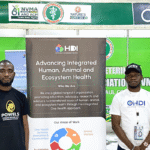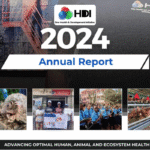Written by Kess Rowe
In just over a year, SARS-CoV-2 has contributed to nearly three million deaths globally, and potentially even more indirectly through secondary infections, canceled hospital appointments, and lower economic investment in current health programs. Undoubtedly, the pandemic has had a high burden on most countries, resulting in a minimum loss of $76.7 billion in global GDP, as well as a number of social and political factors. However, compared to the predicted impact of antimicrobial resistance (AMR), the COVID-19 pandemic could be considered manageable.
In 2014, a review commissioned by the UK government and the Wellcome Trust stated that by 2050, AMR could contribute to 10 million global deaths per year and cost governments over $100 trillion – ranging from 3.1% to 5.6% of GDP in various nations. Despite this, economic investment in novel antimicrobial research has been declining since the 1980s, while many pathogens have become increasingly resistant to existing and new treatments. Although there are many pharmaceutical companies working on novel therapeutics, these often use analogs of existing drugs, such as various cephalosporins, which acquire resistance rapidly.
Perhaps the most notable resistant organism is the gram-positive bacterium Staphylococcus aureus, which lives in the nose or on the skin of one in three people. Methicillin-resistant S. aureus (MRSA) has become a headlining microbe with respect to AMR due to its endemic presence in hospitals in which the pathogen enters the body when it is compromised during operations and invasive procedures. The rising resistance of S. aureus to other ß-lactam antibiotics (penicillin, methicillin, carbapenems) has made it a key target for research that aims to make antibiotics that are broad-spectrum, cost effective and slow at acquiring resistance. Therefore, there has been a rise in alternative approaches to R&D that target specific characteristics of MRSA, such as its resistance and colonizing mechanisms. An interesting review outlines specific areas of research, some of which have been summaries below.
Reversing Resistance
Resistance in S. aureus began in the late 1940s against penicillin, followed by methicillin resistance in the late 1960s. Currently, resistance has been shown against all ß-lactam antibiotics, which target penicillin-binding proteins (PBPs) to prevent further cell wall synthesis, resulting in decreased stability and eventually cell death. However, MRSA has acquired a mobile gene element called MecA that encodes a PBP2a protein and has a lower affinity for ß-lactam antibiotics. This reduces binding to antibiotics and allows the cell to maintain its structure. Therefore, MecA has become a key target for designing new antibiotic treatments through a range of different approaches.
One of these approaches aims to inhibit the production of PBP2a by preventing translation of the messenger RNA. This uses an antisense phosphorothioate oligodeoxynucleotide (PS-ODN) which is able to degrade mRNA, preventing production and integration of the PBP2a protein into the cell wall. This is delivered using an anionic liposome which allows PS-ODN to be transferred into the cell. It is suspected that this approach may also be effective against other Staphylococcus which have acquired MecA and the antisense approach could be applied to other bacteria which have acquired resistance, such as the oprM gene in Pseudomonas aeruginosa.
Another approach targets the protein FtsZ which is involved in spatial and temporal control during cellular division. FtsZ functions as a platform for recruitment of cellular division components, such as PBP proteins, to form a structure known as a Z-ring at the site of division. FtsZ-targeting agents inhibit the Z-ring formation, but also make bacteria more susceptible to ß-lactams after acquiring resistance. While these studies have mainly been directed towards S. aureus, the concept of FtsZ-targeting agents can be applied to almost all bacteria, as it is involvement is fundamental in cell division.
Quorum Sensing
Quorum sensing (QS) is a method used by bacteria for communication between individuals in a population within the same and different species. During most infections, this prevents a low density of bacteria from releasing virulence factors which may be detected by the immune system when the population is too small to defend itself. QS uses biochemical signals called autoinducers which are either specific to species such as AHL in gram-negative bacteria and AIP in gram-positive bacteria or are universal among most species, such as AI-2. The route of this communication is therefore a target for novel antibiotic treatments against resistant infections to prevent the population from being stable.
The concept of quorum quenching refers to the inhibition of QS through blocking the receptors involved. In S. aureus, QS is regulated by the Agr operon. When AIP binds to the membrane receptor AgrC, the DNA regulator AgrA is phosphorylated, allowing for upregulation of RNAII and RNAIII, which increase virulence and production of further AIP. One study showed that a small molecule called biaryl hydroxyketone is able to block this mechanism by specifically binding to the promoter of RNAIII and preventing the release of virulence factors, decreasing the pathogenicity of MRSA. In combination with ß-lactams, this is efficient at killing the infections despite resistance.
Phage Therapy
Bacteriophages are a type of virus that are able to infect bacteria, often specific to a particular species. Their discovery in 1915 was overshadowed by the development of antibiotics, but bacteriophages still have a huge potential in the future of clinical medicine, such as combatting antibiotic resistance.
Much like normal viruses, bacteriophages infect a cell by injecting in their own genetic material and allowing it to be incorporated into the host cells’ genome. Both the genomes are transcribed; however, the bacteriophage genome often encodes lytic proteins which result in cell death. While the concept of phage therapy isn’t new, no treatment has passed phase 2 of clinical trials. This is likely tied to the risk of inducing toxic shock in patients if concentrations of phage are too high and lyse an excessive number of bacterial cells. Similarly, their specificity can be problematic when treating complex infections, so would be delivered therapeutically through a cocktail of different phages, also reducing the risk of resistance. However, their specificity may be helpful for targeting specific aspects of infection, such as biofilms.
Biofilms are populations of bacteria of one or more species that are able to accumulate to form a complex structure and are often found on medical devices. These are encased in an extracellular matrix that protects against environmental stresses such as antibiotics or the immune system, making them difficult to treat. Studies have shown that the use of phage therapy against biofilm formation and late-stage degradation has been promising, meaning that health services could save billions of dollars in the cost of replacing these medical devices.
Another interesting tool that has mainly been discussed in the context of human genetics is the use of clustered regularly interspaced short palindromic repeats (CRISPR). This is a system found in bacteria which act as immune defence against bacteriophages and plasmids by recognising foreign DNA and breaking it down into short sequences. This can be applied to antibiotic treatment by inserting a CRISPR-Cas system – which has been made sensitive to antibiotic-resistant genes – onto a plasmid and transmitting this inside a cell using a bacteriophage. This allows the CRISPR-Cas system to specifically remove antibiotic-resistant genes, allowing the cell to become re-sensitized to ß-lactams. Not only is CRISPR effective at removing genes, but it is a cheap method which has high economic investment, so may have increasing uses in the future of infectious disease.
The potential for the development of treatments against AMR is broad and unending, especially with the evolution of machine learning AI that now has the ability to design future antibiotic structures. However, the main limitations to research lie in the lack of economic investment from pharmaceutical companies and governments. Much like the control of emerging diseases, more attention should be placed on the issue of AMR to prevent catastrophic figures such as those predicted for 2050.
____________________
Kess Rowe is an undergraduate student of Biochemistry and Microbiology at the University of Sheffield. She is set to join the London School of Hygiene and Tropical Medicine (LSHTM) to undertake an MSc in Control of infectious disease.
____________________
Interested in writing scientific and technical articles and reports on correlated One Health topics? Read the OHDI Call for Writers and send an email to kiki@onehealthdev.org











